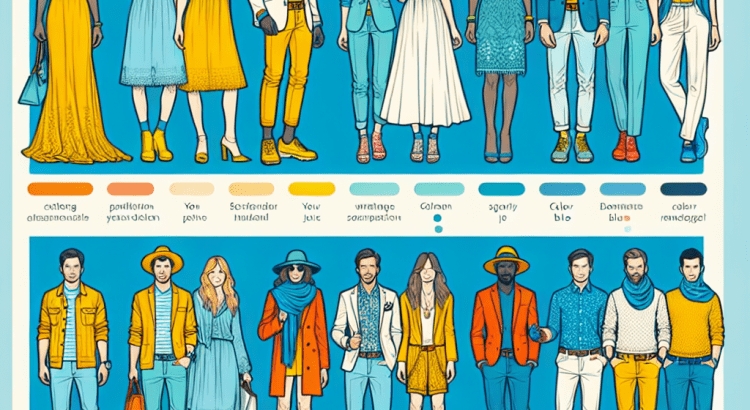The Power of Color: How to Use Color Psychology to Enhance Your Outfits
Have you ever worn a specific color outfit and felt an instant mood boost? Or perhaps you’ve noticed people reacting differently to you based on what you’re wearing? The secret lies in color psychology, and it’s time to harness this power to enhance your wardrobe and, consequently, your life. But don’t worry; this isn’t a science class, and there won’t be any lab coats involved—unless they’re a smashing shade of red, of course!
Why Color Matters in Fashion
The colors you choose to wear can significantly impact how you feel and how others perceive you. Color psychology explores how colors influence human behavior and emotions. For instance, wearing a bright yellow dress might make you feel cheerful and energetic, while a navy-blue suit can convey professionalism and authority. Understanding the emotional and psychological effects of different colors can help you make smarter sartorial choices that align with your goals for the day.
The Basics of Color Psychology
Before you start adding new pieces to your wardrobe, let’s break down some fundamental hues and their psychological impacts:
- Red: Often associated with passion, excitement, and energy. Best for standing out and making bold statements.
- Blue: Conveys calmness, stability, and trust. Ideal for professional settings or situations where you need to appear reliable.
- Yellow: Represents happiness, optimism, and creativity. Great for casual days and creative endeavors.
- Green: Linked to nature, balance, and growth. Perfect for low-key social gatherings and eco-friendly events.
- Purple: Signifies luxury, sophistication, and mystery. Suitable for special occasions and when you want to exude elegance.
Dressing for the Occasion
Your outfit should match the vibe of the occasion, and color can help you achieve that effortlessly. Here are a few tips:
- Job Interview: Opt for blues or grays to convey professionalism and dependability.
- First Date: Red is known for its passion but don’t overdo it. A pop of red in your accessories can make a great impression.
- Casual Outing: Stick to lighter shades like yellows and greens to keep the vibe relaxed and friendly.
- Formal Events: Deep colors like black, navy, or purple can give you an aura of sophistication and elegance.
Personal Style Meets Color Psychology
Mixing color psychology with personal style is where the magic truly happens. It’s not just about wearing a specific color; it’s about how you integrate them into your wardrobe to reflect your unique personality. Consider incorporating these elements:
- Accessories: Use scarves, ties, and jewelry to add pops of color. A bright red scarf can liven up a monochromatic outfit.
- Layering: Blend different shades and tones to create a balanced look. For example, pairing a light blue shirt with a navy blazer.
- Patterns: Don’t shy away from patterns that incorporate various hues. Florals, stripes, or plaids can be an excellent way to introduce multiple colors into your look.
Resources to Dive Deeper
If you’re fascinated and want to explore further, there are fantastic resources available, including YouTube tutorials that break down color theory and styling tips. One great channel to check out is Personal Style Guide, where you can find more insights into color psychology and how to use it to elevate your wardrobe.
Conclusion
Understanding the power of color can significantly enhance your outfit choices and, by extension, your confidence and how others perceive you. Remember, the key is to align the colors you wear with the message you want to send and how you want to feel. Don’t be afraid to experiment and find your perfect palette. Happy styling!
And hey, if you’re feeling blue (pun intended) and need a quick mood lift, grab that yellow sweater—it’s scientifically proven to bring a little sunshine into your day!
